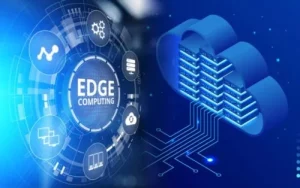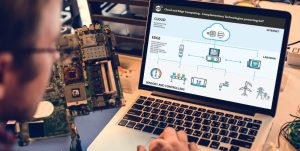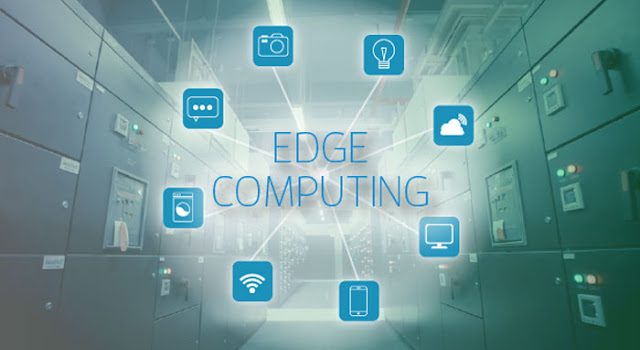
Edge computing is revolutionizing the way data is processed and managed by decentralizing computational tasks and shifting processing power closer to where data is generated, enabling faster response times, reduced latency, and improved efficiency in data processing strategies. In this article, we delve into the concept of computing, its applications across industries, and its impact on optimizing data processing workflows.
Understanding Edge Computing:

Edge computing refers to a distributed computing paradigm that involves processing data near the source where it is generated, rather than relying on a centralized data center or cloud environment. By bringing computational tasks to the “edge” of the network, edge computing minimizes data latency, enhances real-time processing capabilities, and optimizes bandwidth usage, making it an ideal solution for applications requiring low latency and high performance.
Architecture of Edge Computing Systems:
Edge computing systems comprise a network of edge devices, such as sensors, gateways, and edge servers, deployed at the network edge to collect, process, and analyze data in close proximity to where it is generated. These devices work together to perform computational tasks locally, offloading processing from centralized servers and enabling rapid decision-making, data aggregation, and analytics at the edge of the network, improving overall system efficiency and performance.
Edge Computing in IoT Applications:
The Internet of Things (IoT) relies heavily on edge computing to manage the massive volume of data generated by interconnected devices. Edge computing enables IoT devices to process data locally, filter out irrelevant information, and transmit only valuable insights to the cloud, reducing latency, conserving bandwidth, and improving response times for connected devices in smart homes, industrial automation, healthcare monitoring, and other IoT environments.
Edge Computing for Real-Time Analytics:
Edge computing plays a crucial role in enabling real-time analytics and decision-making by processing data at the edge of the network, without the need for data to travel back and forth to a centralized server. This capability is particularly beneficial for applications requiring instant insights, such as autonomous vehicles, predictive maintenance systems, and smart grids, where latency-sensitive data processing is essential for safe and efficient operations.
Security and Privacy in Edge Computing:
Security and privacy are paramount considerations in edge computing architectures, as data processed at the edge may be more vulnerable to security threats and privacy breaches. Edge computing solutions incorporate robust security measures, such as encryption, authentication protocols, and access controls, to safeguard data integrity, protect sensitive information, and mitigate risks associated with decentralized data processing and storage at the network edge.
Edge Computing for Edge AI Applications:
Edge computing and artificial intelligence (AI) are synergistic technologies that work together to bring intelligence and decision-making capabilities to the network edge. Edge AI applications leverage edge computing infrastructure to deploy AI algorithms directly on edge devices, enabling tasks such as image recognition, natural language processing, and predictive analytics to be performed locally, enhancing responsiveness, privacy, and autonomy in edge AI solutions.
Edge Computing in Telecommunications:
In the telecommunications sector, edge computing is transforming network architectures by decentralizing data processing functions and content delivery to the edge of the network. By deploying edge computing resources in proximity to end-users, telecommunications providers can reduce network congestion, improve streaming quality, and deliver low-latency services, such as online gaming, video conferencing, and content caching, enhancing user experiences and network performance.
Edge Computing for Remote Operations:
Edge computing is instrumental in supporting remote operations in industries such as oil and gas, mining, and utilities, where connectivity is limited, and real-time data processing is critical for operational efficiency and safety. By deploying edge computing infrastructure at remote sites, organizations can process data locally, monitor equipment conditions, and automate processes autonomously, reducing dependence on centralized data centers and improving operational resilience in challenging environments.
Edge Computing for Edge Cloud Integration:

Edge cloud integration combines the benefits of edge computing with cloud services to create a hybrid architecture that optimizes data processing, storage, and analytics across distributed environments. By integrating edge computing resources with cloud platforms, organizations can scale computational capabilities, enable seamless data synchronization, and leverage cloud-based services for data analytics, machine learning, and software updates, creating a unified ecosystem that combines the strengths of edge and cloud computing models.
Future Trends and Challenges in Edge Computing:
As edge computing continues to evolve, future trends are expected to focus on enhancing edge computing infrastructure, expanding edge AI capabilities, and addressing challenges related to interoperability, data governance, and scalability in edge environments. Innovations in edge computing technology, such as 5G networks, edge-native applications, and edge-to-cloud orchestration tools, are poised to drive the next phase of edge computing adoption, transforming data processing workflows and unlocking new opportunities for edge-driven innovation and digital transformation in a data-driven world.
Conclusion:
Edge computing represents a transformative approach to data processing that brings computation closer to the source of data generation, enabling faster response times, reduced latency, and enhanced efficiency in data processing workflows. By leveraging edge computing technology, organizations can optimize their data processing strategies, improve real-time decision-making, and unlock new possibilities for edge-driven applications across a wide range of industries, shaping the future of data management, analytics, and connectivity in a hyperconnected and data-intensive digital landscape.










